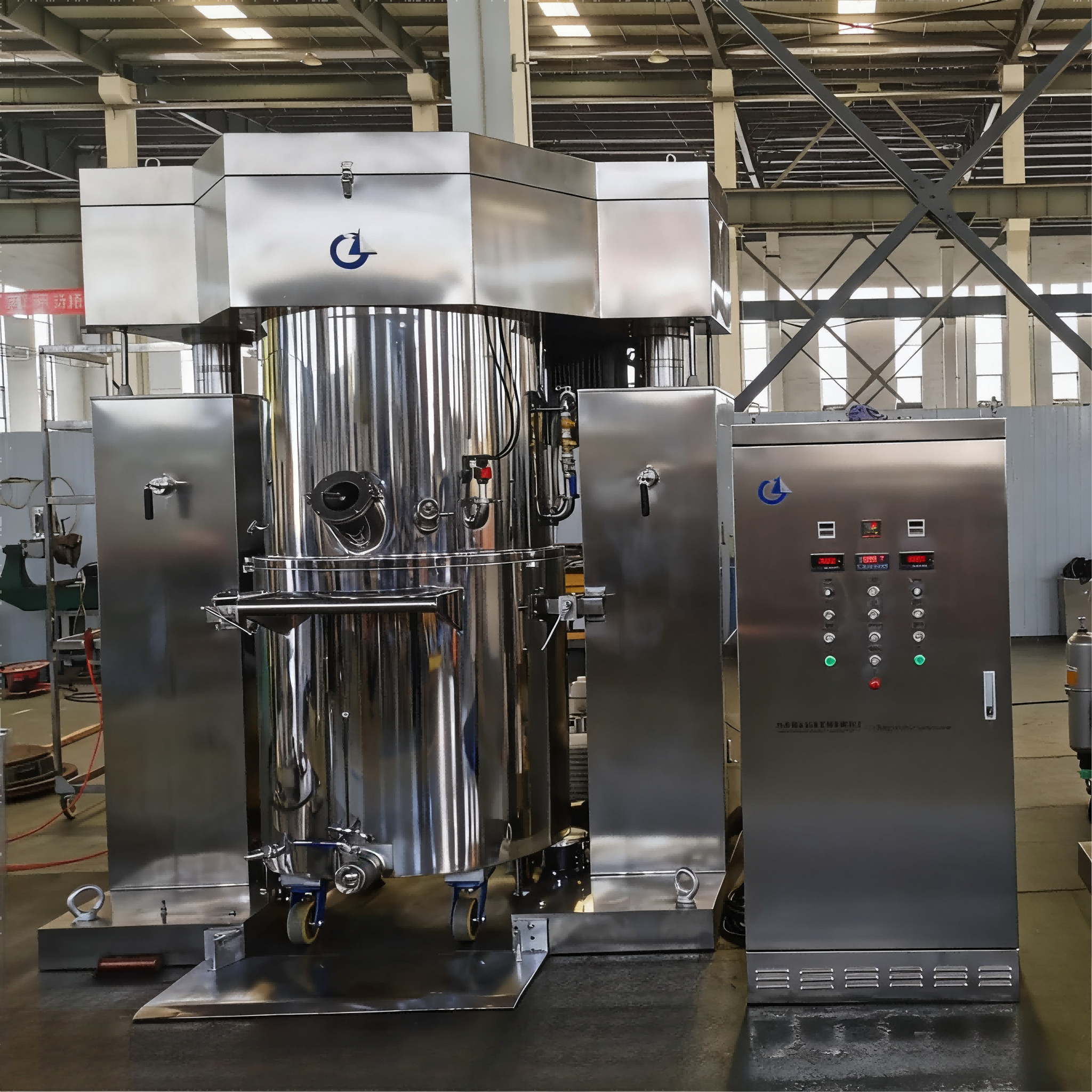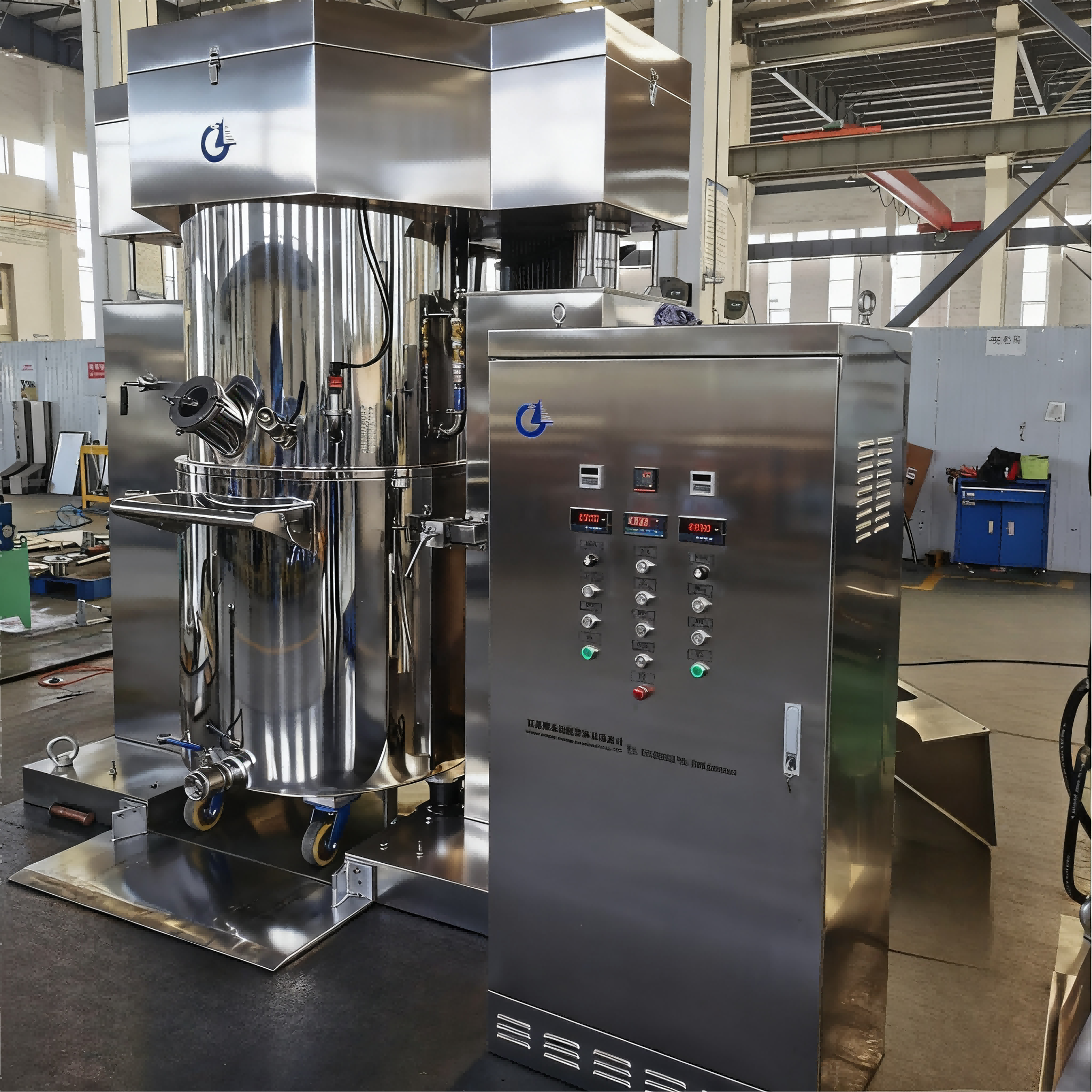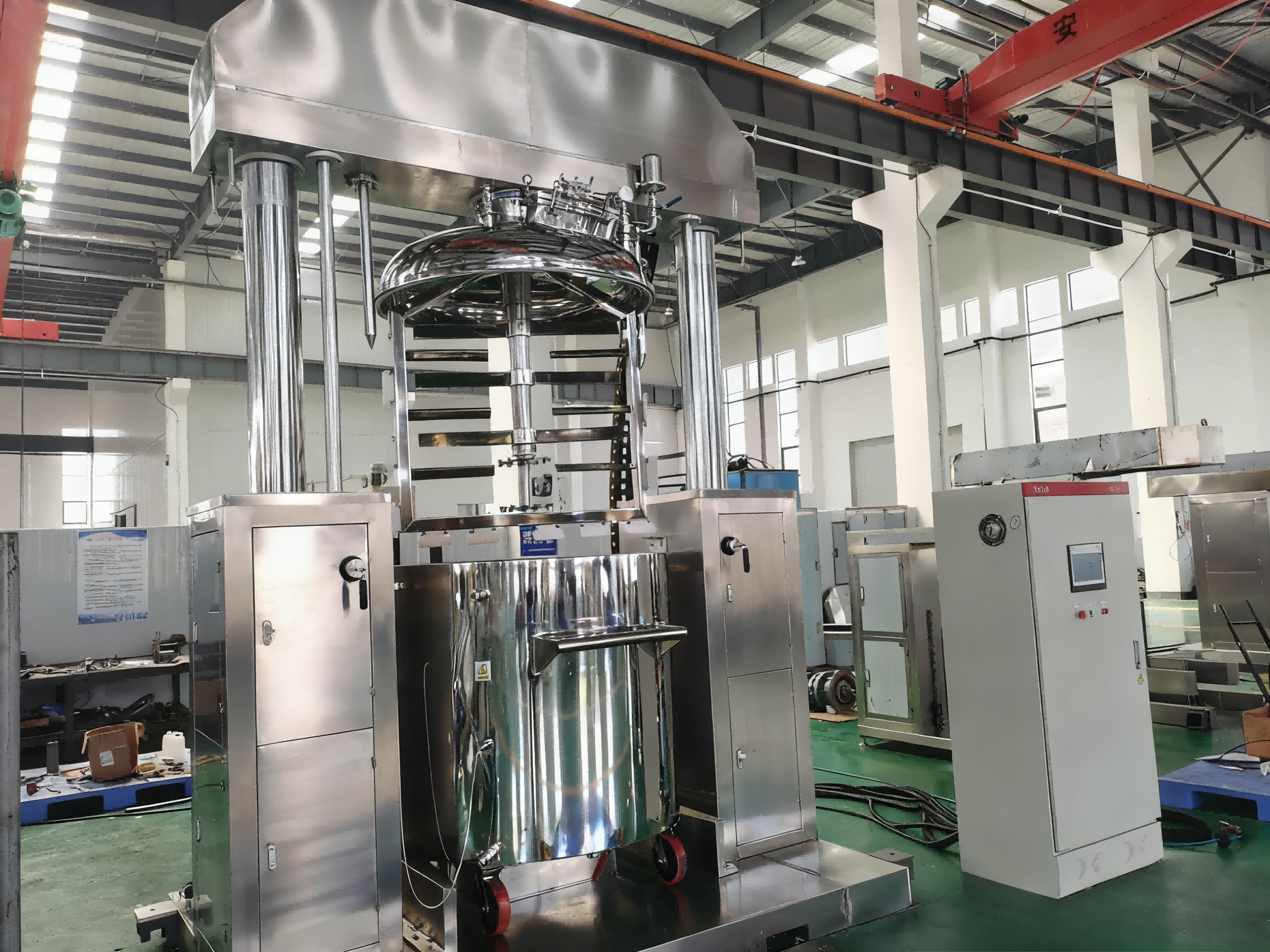Key Applications of Double Planetary Mixers in Multiple Industries
Key Applications of Double Planetary Mixers in Multiple Industries
With its composite mixing mechanism of "revolution + rotation" and integrated systems such as temperature control and vacuum, double planetary mixers accurately solve the problems of homogeneous mixing and defoaming of high-viscosity, multi-component materials. They have become core process equipment across multiple high-end manufacturing fields, with application scenarios extending from traditional chemical industry to strategic industries such as new energy and aerospace, playing an irreplaceable role in the production of key products.
1.Adhesive and Sealant Industry: Core Equipment for Ensuring Bonding Performance
In the production of adhesives and sealants, double planetary mixers are crucial for achieving "component uniformity and bubble-free stability". Taking epoxy resin adhesives for electronic packaging as an example, the equipment needs to mix multi-components such as epoxy resin, curing agent, and fillers (e.g., silica powder). Its dual-paddle composite motion can break up filler agglomerates, enabling uniform dispersion of powders with particle sizes of 1-5μm, with dispersion deviation controlled within 5%. Cooperated with a vacuum system with a pressure above -0.095MPa, it can completely remove micro-bubbles generated during mixing, avoiding pin corrosion or reduced insulation performance after packaging. In the production of architectural sealants, targeting the high viscosity of silicone sealants (up to 500,000 mPa·s), the equipment adopts a combination of anchor paddles and dispersing discs to achieve deep fusion of base adhesive and cross-linking agent, ensuring the tensile strength and aging resistance of sealants meet standards.
2. New Energy Lithium Battery Industry: Key Link for Improving Battery Performance
In the preparation of lithium battery electrode slurries, double planetary mixers directly affect the energy density and cycle life of batteries. For positive electrode slurry production, ternary materials, conductive carbon black, binders (PVDF), and NMP solvent need to be mixed. The equipment uses stepwise speed control (revolution: 10-40 rpm, rotation: 50-150 rpm) to first pre-disperse conductive agents, then add active materials to form homogeneous slurry, avoiding uneven conductivity caused by carbon black agglomeration. For graphite materials in negative electrode slurry that are prone to moisture absorption, the equipment combines jacket temperature control (40-60℃) with vacuum defoaming to control the slurry moisture content below 50 ppm, reducing side reactions during battery charging and discharging. Currently, mainstream lithium battery enterprises have adopted this equipment as the standard configuration for electrode slurry preparation, which can increase the capacity retention rate of batteries after 1,000 cycles by 8%-12%.
3. Composite Material Industry: Process Core for Achieving Structural Reinforcement
In the production of high-performance composite materials, double planetary mixers are the core equipment for achieving uniform compounding of matrix and reinforcement phases. In the preparation of carbon fiber-reinforced polymer matrix composites (CFRP) for aerospace, the equipment mixes epoxy resin matrix with short carbon fiber yarns. Its three-dimensional shear field ensures directional distribution of fibers in the matrix, avoiding mechanical property fluctuations caused by agglomeration. In the production of glass fiber composites for wind turbine blades, targeting the high solid content system (solid content ≥70%) of resin and glass fiber powder, the equipment adopts a ribbon paddle with wall-scraping design to achieve dead-angle-free mixing, increasing the flexural strength of composites by more than 20%. Additionally, in the production of ceramic matrix composites, the equipment can precisely control the mixing ratio of ceramic powder and binder, providing a homogeneous green body for subsequent sintering processes.
4. Fine Chemical and Daily Chemical Industry: Stabilizer for Ensuring Product Quality
In the fine chemical and daily chemical fields, double planetary mixers guarantee the quality stability of high-end products. In the production of cream, eye cream, and other paste products in the cosmetics industry, the equipment achieves emulsification and homogenization of oil and water phases through precise temperature control (30-80℃) and low-speed mixing, refining the product particle size to 1-10μm and improving skin feel and absorption. In the production of pigments and inks, for the mixed system of organic pigments and resins, the equipment combines high-speed shearing of dispersing discs with macro mixing of revolution to ensure uniform pigment tinting strength, avoiding color difference during printing. In the production of pharmaceutical intermediates, the equipment uses 316L stainless steel and aseptic design, combined with a vacuum system for closed mixing, meeting GMP production standards and ensuring the purity and batch stability of intermediates.
From basic chemical industry to high-end manufacturing, double planetary mixers have become key equipment for promoting product performance upgrading by adapting to the process characteristics of different industries. The continuous expansion of their application scenarios also demonstrates the core value of high-end mixing equipment in the transformation and upgrading of the manufacturing industry.
News
- Latest News
- Solutions
- FAQ
Recommend Products
-
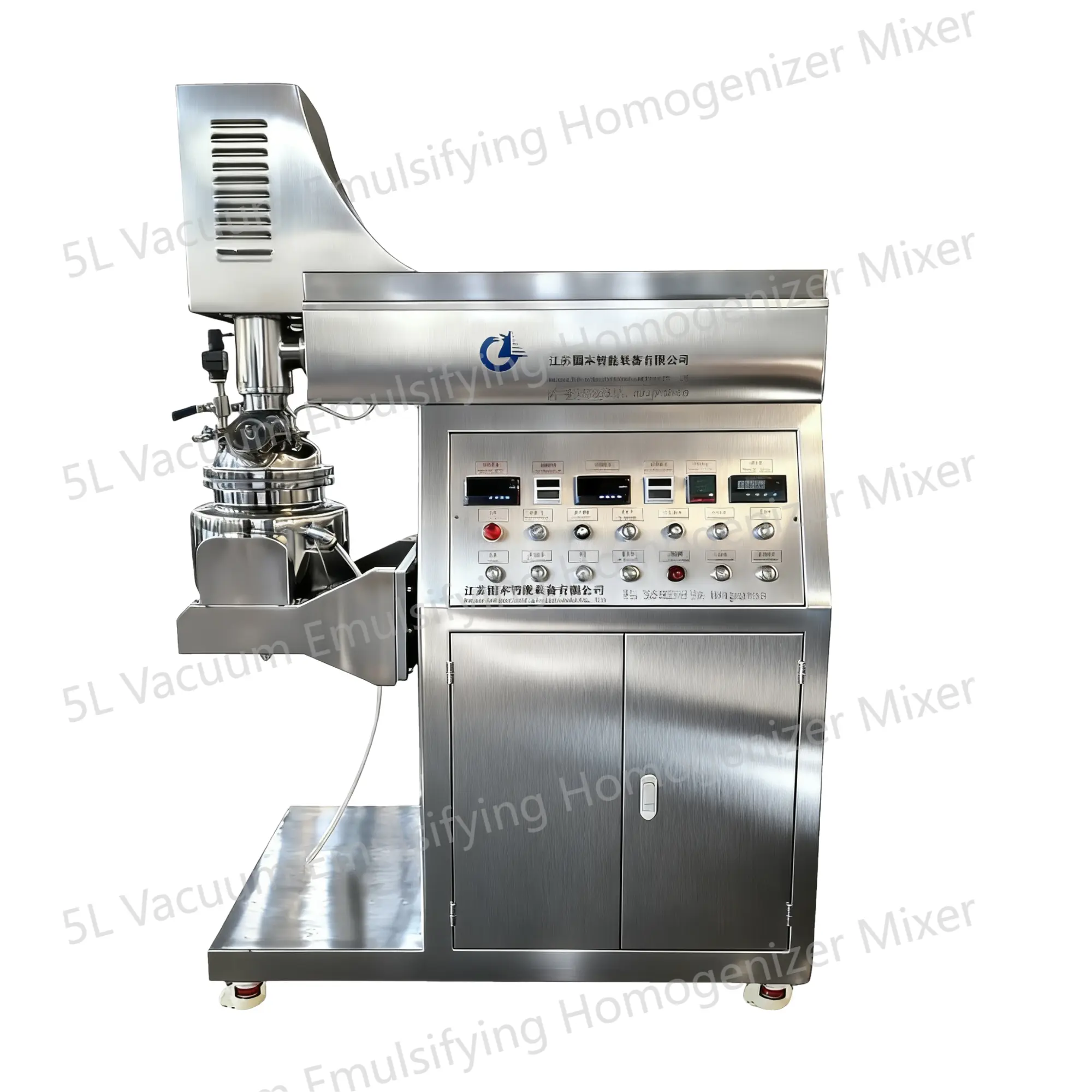 5L Vacuum Emulsifying Homogenizer Mixer
5L Vacuum Emulsifying Homogenizer MixerThe 5L vacuum emulsifying mixer is a device designed for emulsifying and mixing various substances in a vacuum environment. This equipment is equipped with a mixing tank with a capacity of 5 liters and is widely applied in industries such as food, pharmaceuticals, cosmetics, and pesticides.
-
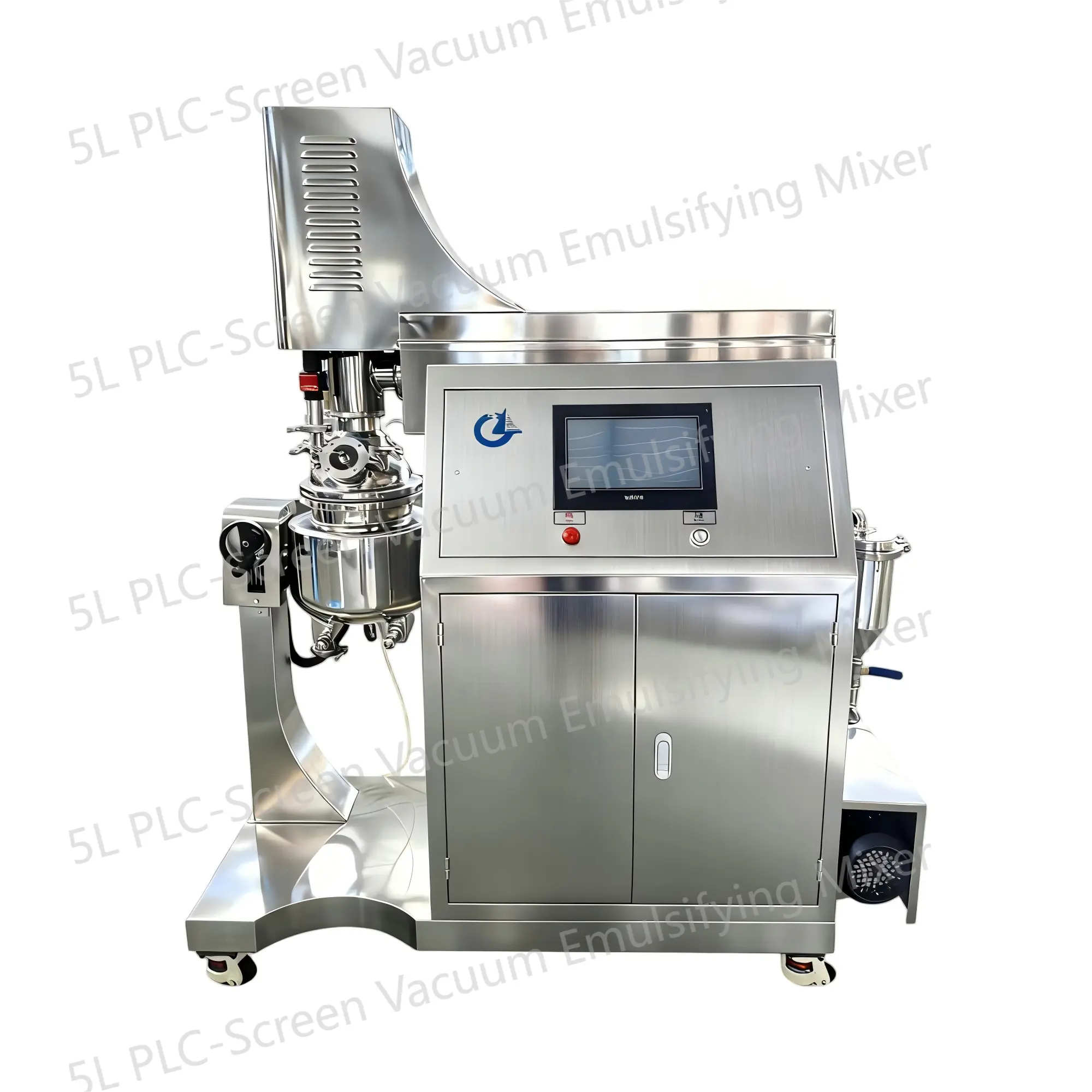 5L PLC-Screen Vacuum Emulsifying Mixer
5L PLC-Screen Vacuum Emulsifying MixerThe 5L PLC-Screen Vacuum Emulsifying Mixer is a device designed for emulsifying and mixing various substances in a vacuum environment. This equipment is equipped with a mixing tank with a capacity of 5 liters and is widely applied in industries such as food, pharmaceuticals, cosmetics, and pesticides.
-
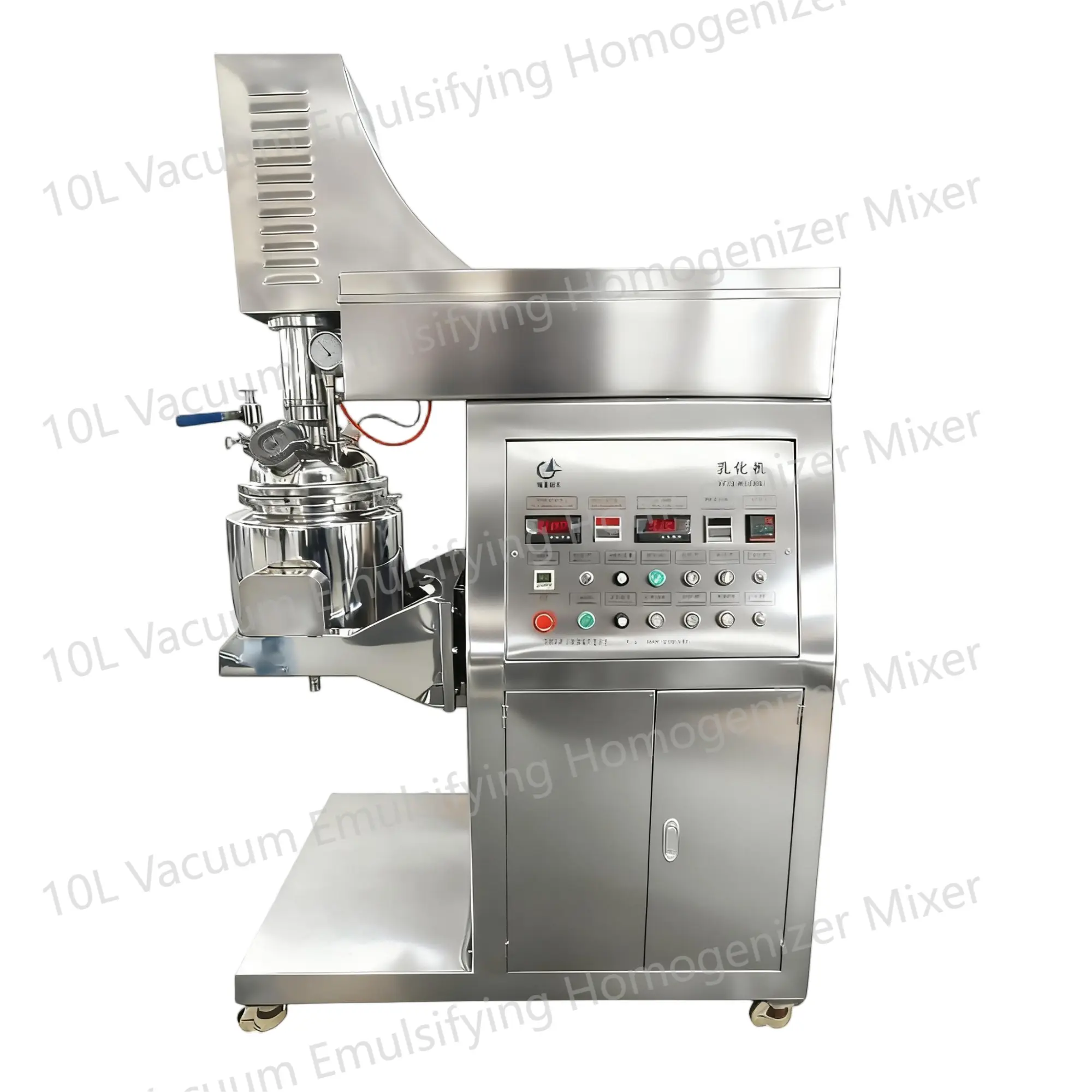 10L Vacuum Emulsifying Homogenizer Mixer
10L Vacuum Emulsifying Homogenizer MixerThe 10L Vacuum Emulsifying Mixer is a device used for emulsifying and mixing various substances in a vacuum environment. It is commonly used in industries such as food, cosmetics, and pharmaceuticals.


 English
English Russian
Russian French
French Spanish
Spanish Portuguese
Portuguese Korean
Korean Japanese
Japanese Thai
Thai